In the ten years I have spent teaching young children between the ages of 3 to 5, one of the most important secrets I have discovered is how to teach number recognition.
Some children will just pick this up from exposure to numbers in their environment. However, for most children, this is a long process and needs some real expertise and strategies to get them confidently recognize numbers. This is where this article comes in!
So, for the short answer, how do you teach children to recognize numbers?
Teach children to recognize numbers by using fun stories or chants for each number. Practise sky-writing the number in air, drawing it in foam or other messy play substances, and by making numbers in craft activities. Seeing numbers throughout their play is crucial.
That’s the simple version, but there is just so much more to it than that!
In this article I have condensed ten years of trial and error into 17 tried and tested strategies that you really should try to get children recognizing numbers.
Pretty much all of these games can be used either at school or nursery, or at home. Good luck!
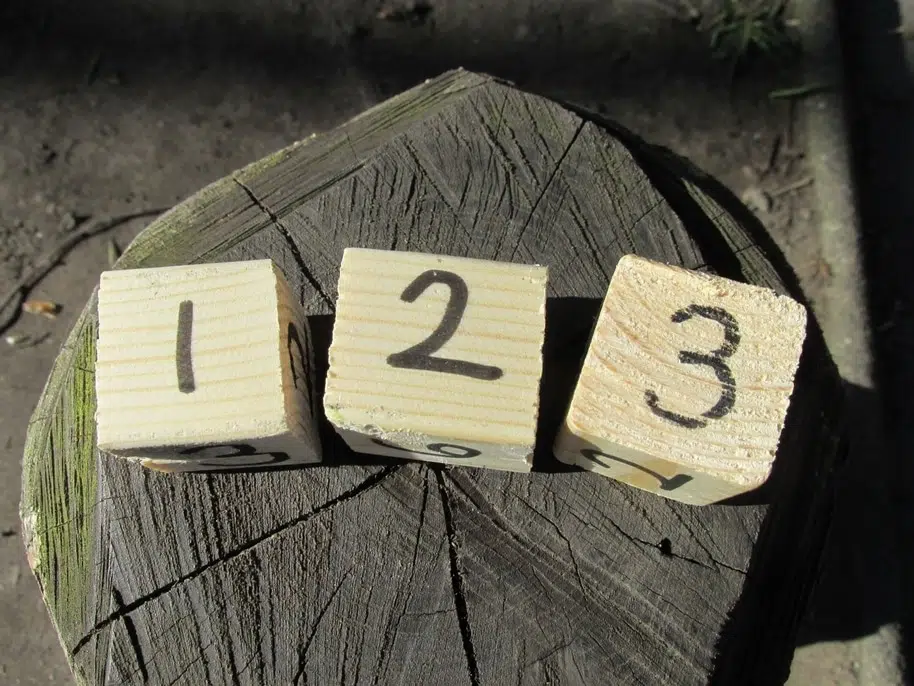
1.Use Stories For Each Number
A great way to introduce stories to start with is with storytelling.
Stories are great for teaching lots of different skills, as stories really tap into children’s sense of curiosity and attention like few other things.
One way to do it is have a bag of a few objects. If you are introducing number 3, for example, you could say something like ‘This is number 3. Today it went on an adventure. It found 3 magic stones.’ (Take them out of the bag). ‘It rubbed the stones, and out popped 3 frogs.’ (Take the toy frogs out of the bag).
It is good to spend time during the story looking at what the numeral looks like, and getting them to draw it in the air, or on their hand.
2. Number Stones
Beautiful materials help in the teaching of anything, and these number stones are certainly a fantastic natural resource.
All you need for these are some pebbles. I happened to find some excellent white, sparkly stones by chance, that the children really love.
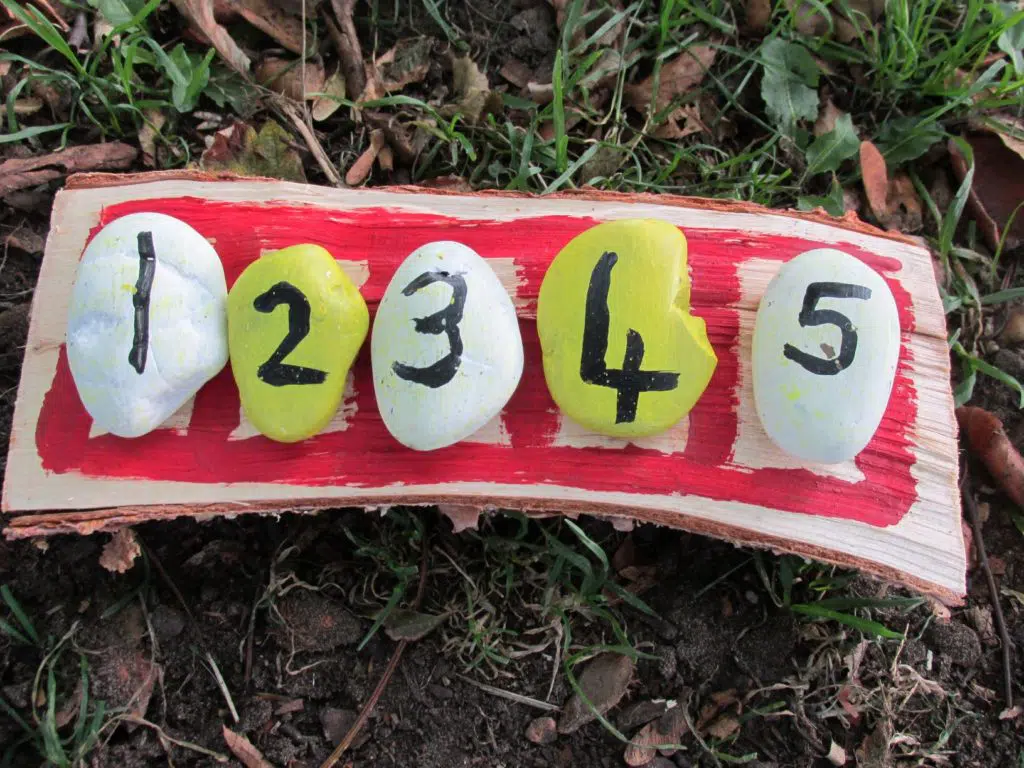
The idea is to write or paint some numbers on some of the stones. There are other things you can do, like create stones with quantities on as well. For example, I have created these stones with different numbers of bugs on:
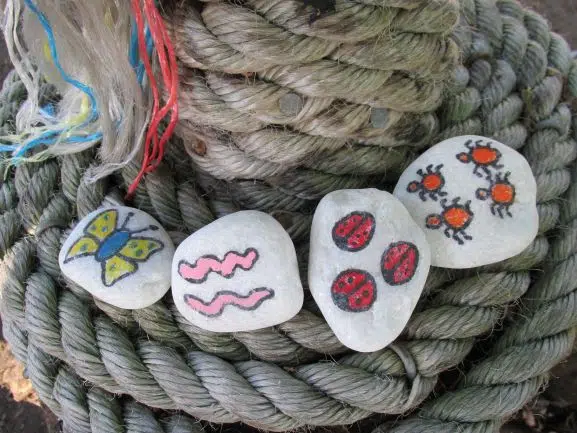
These stones are great for some of the following things:
- Finding objects, such as 3 pine cones, and matching to the right numeral
- Match numeral stones to quantity stones, e.g. 4 bugs to the number 4
- Trying to copy a number line and put them in order.
This activity is just one of many exciting ways to use stones and pebbles for learning. To find out a whole load more, you can check out this definitive guide on how to use story stones.
3.Use Chants
There are little fun ditties and chants you can use for each number.
For example, number 3 is:
A curl for you, and a curl for me
That’s how you make number three!I have used chants that I just found on the internet before. For example, this video has some excellent ones you can use:
Also, children really love this song when it comes to numeral formation:
4.Have Number Actions
Many children learn letters through actions when they do phonics, so why wouldn’t the process work for numbers.
The good news is – it does work!
Multisensory learning is definitely the way to go when you are teaching things like recognizing numerals or sounds. It activates a lot more of the brain if you have movements, sound and visuals all mixed together.
The number actions I use I have just invented. They go like this:
0 – Make a circle with your fingers
1 – Throw one arm straight up
2 – Two arms up
3 – These are like Mickey Mouse ears on their side. Put your head to one side, and put Mickey Mouse ears on top (honestly the sideways ears do look like mouse ears)
4 – I get them to cup both hands round their mouths and call ‘Four!’ This is like when a golfer loses their ball and calls ‘fore!’
5 – Show five fingers
6 – Put two fingers up high in the air. This is the signal in cricket for a ‘six’. Apologies to my American friends that I know read this blog in droves! If you have no idea what this means, please feel free to invent your own action for six.
7 – Do a salute with your hand. Your arm will have made the shape of a ‘seven’.
8 – Pretend to hold two apples, one on top of the other. Put them to your mouth and say ‘eight’ (as though you just ‘ate’ the apples)
9 – Put your hand vertically underneath your head with your fingers on your chin. It looks like your head is on your arm, like a lollipop. I looks a bit like a nine – a stick and a circle
10 – Two sets of hands thrown forwards (with ten fingers)
Using actions such as this works a treat for teaching numbers, and is also an excellent way to teach phonemes (sounds) as well.
5.Skywrite Numbers
Skywriting is another great multisensory experience.
It is good if you can show them what the numbers look like on something – maybe a chalkboard, interactive board, or written on big pieces of paper.
The simplest way of skywriting is to stand up, and use your finger in the air to draw the numbers. Make them as big as you can! (i.e. get the children to bend their knees, and stretch up high respectively)
You can make the experience even more exciting by:
- Using ribbons or streamers to draw the numbers in the air
- Skywrite to music!
- Use puppets or toys in their hands to write with
6. Link Numbers To Books
Books are another route to firing up children’s curiosity and interest.
The idea of this strategy is that you find opportunities in books to count or find numbers, and then talk about it. You can write the numbers that you find, or link one of the other strategies in this article to the numbers (for example, skywriting the numbers that you find).
There are a mixture of books you can use:
- Many books are clearly about maths, and they have lots of numerals in anyway. These work really well.
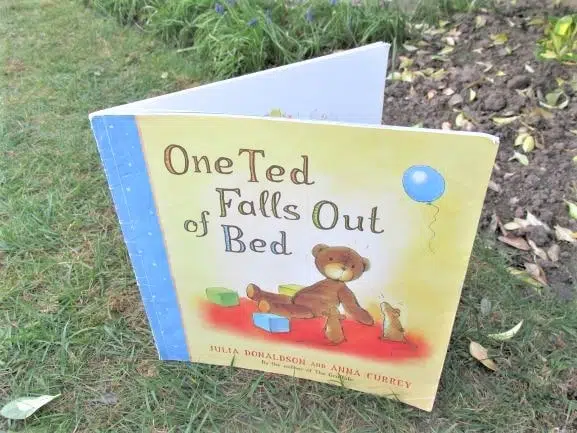
- Some books are nothing to do with counting, but you can link numbers to them anyway. You can count the dwarves in Snow White for example, and write the number. You can count the dogs in Hairy Maclary.
7.Loose Parts On Numbers
Decorating numbers, and turning the numerals into fun art activities is a great way to go to get children recognizing them.
One way is to use loose parts to experiment with the formation of numbers.
All you need to do is create some big numbers somewhere, and the children put lots of loose parts like bottle tops or gems and other things over the top of them to make the shapes of the numbers.
You could:
- Draw numbers on big paper
- Chalk them on the floor outside
- Have big wooden numbers
Good loose parts include things like shells, stones, screws, wood slices, pegs, pompoms, and whatever else you can find. If you are looking for ideas of what other materials you can use for loose parts, then I have written an article containing at least 100 ideas, that you can check out here.
8.Number Lines
Number lines are great for children to start to visualize what numbers look like in a sequence. They are also great when you want to teach number recognition or strengthen their number recognition skills further.
Some excellent ways to use them for this purpose include:
- Making number lines in artistic ways. The children can decorate them, or stick numbers onto sticks or something similar
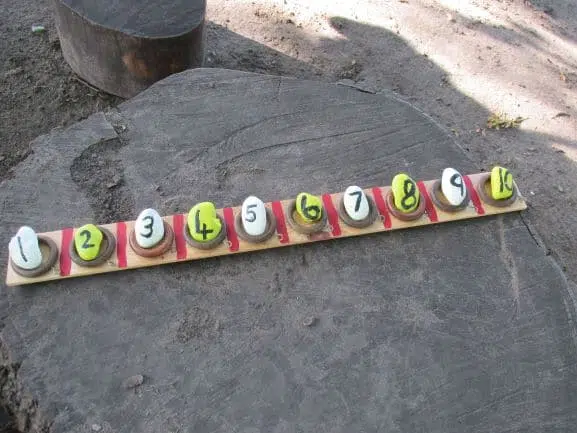
- They can order numbers on a blank line, copying a number line
- Refer to number lines as you sing songs, or do chants. The more they use them the better they will get.
9.Matching Games
Some old-school memory games are great for number recognition. For example, pairs. Have two sets of number cards. I would just focus on the numbers that you are trying to teach, so it could be numbers 1-5 or 0-10.
Place the pairs of cards down, and take it in turns to turn over two and try to find pairs.
Another game that is similar is number bingo.
Matching games like this are quite simply excellent for memory in general. If you want to find out the definitive list of the best preschool memory games for children, then check this out.
10. Number Golf
They really love this one! Many children really enjoy sports, and so if you can tap into this interest then go for it!
There are different ways of doing this, but one easy way is to use big paper. Draw big circles all over the paper – these are the golf holes. Write numbers in these golf holes.
Then all you need is a golf club and a ball. I normally use a small playdough ball that you roll yourself, and the club can be something like a lolly (popsicle) stick.
Hit the ball around the golf-course and try to get it into the holes. This is great for teaching number recognition. You can also:
- Go in order like a real golf course
- Recognize numbers beyond ten
- Try a big outdoor version using large rubber balls and huge circles drawn with chalks. You could kick or roll the balls
Playdough games like this are brilliant for fine motor.
11. Messy Number Formation
The messier numbers can get the better!
The idea is here is to get some kind of messy surface that the children can mark-make numbers on.
You could use:
- Shaving foam
- Shaving gel
- Porridge oats
- Glitter (if you’re feeling brave as this will be very messy!)
- Flour
- Sand
Have some big numbers for them somewhere to look at and copy. The children try writing the numbers in the messy substance! Hours of fun.
12. Put Numbers On Construction Toys
Another good strategy to teach numbers is to find out what the children enjoy doing anyway, and just add some numbers to these activities.
A good example is construction toys. Lots of children love using lego and building blocks, and lots of other things like this. Why not add some numbers to these resources?
For example, you can write some numbers on some old building blocks. Can they put them in order?
Can they build numbers out of construction toys?
Can they make a tower using a quantity of blocks that matches a number card?
Tapping into interests is one of the key ways of motivating young children. If you want to find out the definitive list of things you can do to focus pre-schoolers then take a look at this article I wrote about the 15 top strategies.
13. Numbers On Vehicles
Vehicles are another thing that many young children are fascinated by. These offer many opportunities, including:
- Make a car-park. Get a large piece of cardboard or paper, and draw some car park spaces on it with numbers on. If the cars have numbers on anyway, even better! You can match the numbers
- Have races and put the winners on a podium of some description, labelled 1, 2 and 3
- Put vehicles with numbers on in order, maybe following a number line
14. Numbers In Environment
This is a really important way that many children will learn numbers – encountering them in the environment.
There are many things you can do to help the process:
- Point out numbers that you or children may find in the environment, and talk about them. Examples could be numbers on doors or bins, numbers on football shirts, numbers on signs
- Encourage children to count and record in the activities that they do. For example, build a tower and count the blocks. Make a model of an alien and count the arms.
- Include numbers in displays around the room
15. Number Dice Games
Competitions and games with dice really help children to learn now to recognize numbers.
The repetition of seeing numbers again and again really helps, and also a little bit of competition really focusses the minds for some.
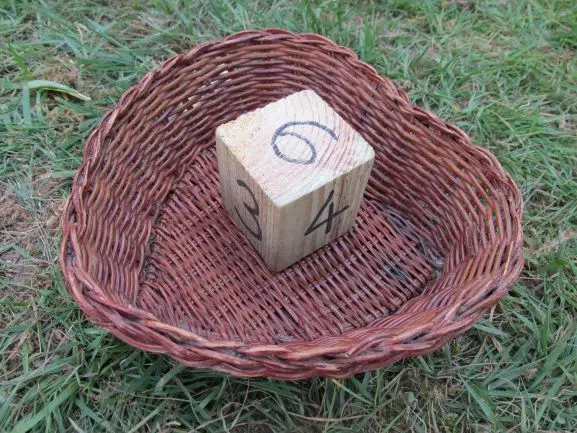
Some great games to do with a numeral dice include:
- Roll the number dice and do that number of actions – e.g. clap, jump, hop etc
- Have a simple racetrack drawn on the floor. This could be with chalk outside, or something similar. Have a long line of about ten sections in a line, so that it looks a bit like a ladder. All children start at one end. One rolls the dice and then jumps forward that number of squares. Then the next person goes. It is a race to take it in turns, and get to the end first! There are lots of fantastic outdoor maths games such as this one. Check out 50 of the best ideas here!
- Whack the dough! This is a fantastic playdough game that they really love. What you quite simply do, is first make lots and lots of little balls of playdough. Then you roll the dice and whack that number of balls! This game is great if you want to teach number recognition, and 1:1 counting. Playdough is one of the most exciting resources you can use for early Maths. If you want to learn more playdough maths games, then check these out.
16. Fishing Game
This is a simple adult-led game that they really enjoy.
Get some kind of number cards, and stick a big paperclip to the top. Get a stick such as a broomstick, and tie a string to it. At the end of the string have a magnet tied on.
The idea is to have the number cards in the middle of a circle of children all faced down. One child goes first, and tries to pick up a card with the magnet. Hopefully the magnet will be strong enough. If you are having problems picking them up, then stick more paperclips on the cards!
Fish for a card and then identify what it is!
This is one of the favorite games in my book 101 Circle Time Games…That Actually Work!
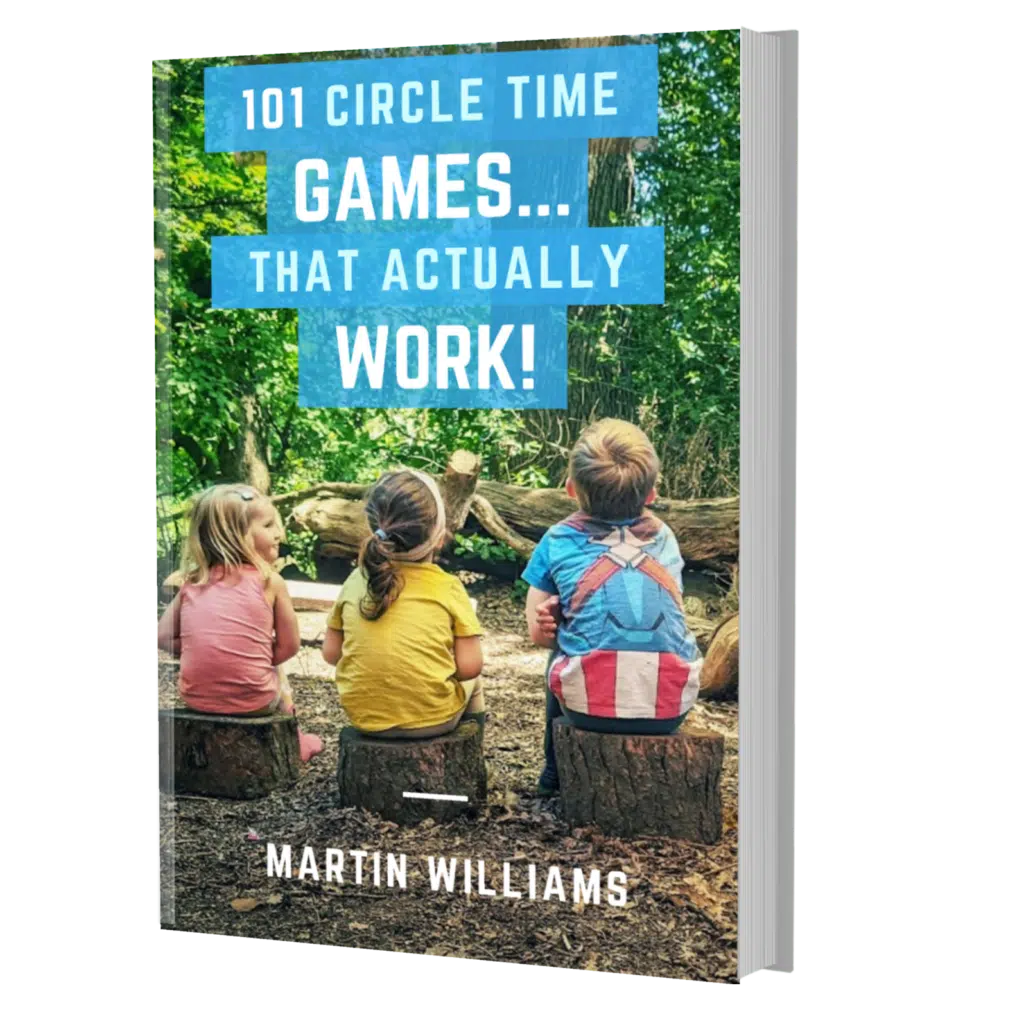
This book contains:
-All the best math circle time games
-Phonics and literacy circle time games
-Emotion and mindfulness circle time games
-Active and PE circle time games
-And so much more!
You can check out 101 Circle Time Games…That Actually Work here.
Right, that’s the end of the 16 best games I know to teach recognizing numbers. I’m going to finish with some key questions that many people ask about recognizing numbers.
Common Number Recognition Questions Answered
Why is it important to know number names?
Recognizing numbers is a foundation skill of early maths. It is important to develop before you can go on to many other skills.
Some examples of skills that cannot be attempted without first recognizing numbers includes:
• Ordering numbers in any way
• Finding missing numbers in a sequence
• Being able to add and subtract with written number sentences
How to teach numbers to special needs children?
Many of the same strategies will apply if you are trying to teach numbers to special needs children.
Try to make the strategies as multi-sensory as possible. Actions and physical movement is good to support number recognition skills.
Please bear in mind that the age and speed with which children will learn numbers will vary greatly if they have any disabilities.
Some children, for example with autism, may learn numbers at a very young age, and number recognition can be an exceptional skill of many autistic children.
At what age should children recognize numbers?
This is a tricky question and really will differ for different children.
In general, children will begin to learn how to recognize numbers somewhere between the age of 2 and 5. It is hard to be more precise than that!
Just because a child learns numbers later than another does not mean that their rate of progress will be slower in the future. It is more an issue of child development rather than an indicator of intelligence.
When are children ready to recognize numbers?
Normally children will display some signs before they start to recognize numbers. These include:
• An interest in numbers in the environment
• They are starting to rote count (or indeed are already good at this skill)
• They are beginning to count objects
Do you teach letters in the same way as numbers?
There are definitely parallels between strategies that work well for both. These include:
• Make it multisensory – the more active and fun the process the more chance they have of learning them
• Use songs, chants and books to help the process
• Repeat and practise what you have learned
Find out more about how letters and sounds are taught here.
Conclusion
The more multisensory you can make number recognition learning the better. Spark children’s curiosity with exciting resources, and get them dancing, moving and singing, and the process becomes fun and effective. Good luck, teaching those numbers!
If you liked this article, then why not try one of these:
